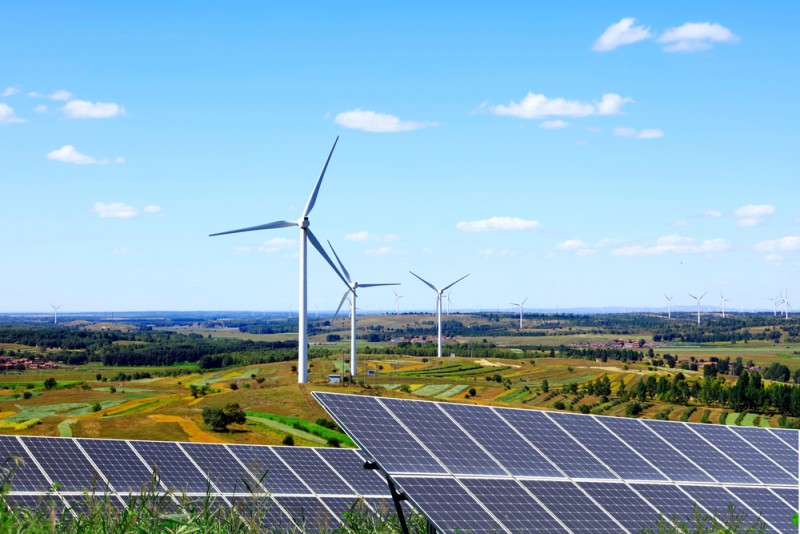In a submission to the Federal Government’s Technology Investment Roadmap discussion paper, ClimateWorks Australia has identified the ‘net zero emissions by 2050’ goal as a key priority.
ClimateWorks said the normalisation of the net zero goal was a key trend shaping an Australian roadmap, with corporations, investors and governments around the world increasingly aligning themselves with the Paris Agreement.
ClimateWorks, nominating priority technologies for the transition, noted that the opportunities presented by technology are spread across all sectors of the economy.
On that basis, the ClimateWorks submission suggests five priority areas for investment:
- Electricity: Renewable energy and energy storage technologies and demand management, including energy efficiency in the end use sectors
- Transport: Electric transport (cars, buses, trucks, passenger and freight rail), efficient transport (public and active transport) and zero emissions fuels (biofuels, renewable hydrogen and ammonia)
- Buildings: Zero emissions (or carbon positive) buildings
- Industry: Renewable heat, renewable feedstocks, and electrification of industrial processes and carbon capture and storage
- Land: Sustainable agriculture and carbon sequestration
ClimateWorks also noted that the priorities shift over time when measured by abatement potential.
The scenarios modelled in its recent Decarbonisation Futures report showed that of the solutions delivering maximum abatement in the period to 2050, energy efficiency, electrification and fuel switch technologies are estimated to deliver the most cumulative abatement followed by non-energy emission reductions and decarbonised electricity (though the latter is necessary for electrification solutions).
However, ClimateWorks said that in the period to 2030, the picture looks slightly different.
As a broad category, the decarbonisation of electricity constitutes the single largest opportunity. Yet, in terms of a single technology, the management of methane from livestock promises the largest abatement.
Other solutions associated with agriculture (such as fertiliser treatments and precision agriculture) are also important, according to ClimateWorks, as is mining energy efficiency and electrification, and electrification of road transport.
ClimateWorks found that the indicative shortlist of priority technologies featured in the Government’s discussion paper is largely compatible with those modelled in its Decarbonisation Futures.
That report identifies the following solutions as core enablers of the Paris Agreement goals:
- Large-scale batteries
- Concentrated solar thermal (CST)
- Large-scale solar
- Onshore/offshore wind
- Grid security technologies
- Battery, hybrid and plug-in hybrid electric vehicles
- Biofuels and bioenergy
- Hydrogen, including hydrogen fuel cell heavy vehicles, hydrogen supply chain technologies and digital technology enablers (such as artificial intelligence and remote sensing), hydrogen for ammonia production and for the reduction of iron
- Heat pumps in building
- The employment in construction of low embodied carbon materials
- Natural and new refrigerants
- Alternative cements such as geopolymers, high blends and magnesium
- Heat pumps and other electric in industry
- Carbon storage in soil and vegetation
- Ventilation air methane abatement technologies for fugitive emissions
- Electrolysers
All of these appear on the Technology Roadmap’s indicative shortlist.
The ClimateWorks submission also recommends, however, additional technologies.
These include:
- Electrified freight rail
- Electrified short haul aviation and shipping
- Ammonia/hydrogen for long-haul shipping
- The use of materials designed for circularity
- Biomaterials (such as engineered timber) in construction
- Catalysts for chemicals
- Electrified mining and manufacturing equipment
- Anti-methane vaccines and feeds
- Lab-grown meats and plant-based substitutes
- The use of carbon capture and storage for gas extraction
In response to the invitation to suggest goals for leveraging private investment, ClimateWorks emphasised that, as well as directly subsidising new technologies, governments should help create markets for them.
For instance, in the building sector, a policy requiring government departments to lease only offices with a 4.5 energy star rating created the demand that led to the normalisation of higher energy efficiency performance of large commercial buildings, as developers chose to meet the improved standards to remain attractive to public sector clients.
ClimateWorks said this is one example of how ‘pull’ mechanisms (which create incentives for deployment) can be as important as ‘push’ mechanisms (such as grants for research and pilot demonstration), with the pull of known market demand driving down costs of emerging technologies when suppliers are confident to invest in scaling up production and accelerating learning by competing for market demand, that is larger than one-off grants.
The ClimateWorks submission also noted that a new low-carbon economy would provide extraordinary opportunities for Australia to leverage its distinctive competitive advantages.
ClimateWorks said that, because the vast Australian continent possesses obvious potential for the generation of renewable energy, particularly through solar energy and wind, it contains established deposits of minerals and other resources required for renewables and energy storage.
These endowments are supported by a well-developed infrastructure: sophisticated financial, engineering and project development, and world-class research and education sectors.
ClimateWorks also remarked that Australia’s already flourishing trade relations with Asia provide opportunities for the export of renewable energy (via high voltage transmission lines), renewable fuels (such as hydrogen and ammonia, and biofuels with potentially enough scale for Australian aviation to be self-sufficient), mineral supplies for battery production (for example, lithium and cobalt) and green industries (for example, green steel and aluminium), and nature-based solutions (such as regenerative agriculture and carbon forestry).
ClimateWorks said it looks forward to working with the Australian Government and each sector to develop and implement the Technology Investment Roadmap.
















